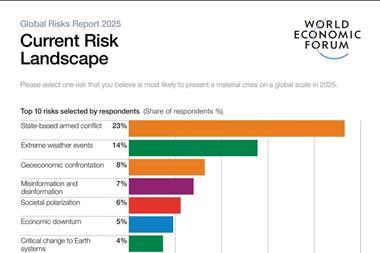When scanning the horizon for future risks, only 24% look three to five years ahead, finds research
Integrating emerging risk considerations into an ongoing risk management program is necessary to avoid future surprises, achieve strategic objectives and deliver long-term value, according to the RIMS report, “Navigating the Complexities of Emerging Risks.”
Key survey findings include:
- 95% reported that the trigger for recategorising a risk from emerging to active or ongoing status is understanding its impact;
- Yet, only 27% address the impact of emerging risks in their risk assessments, while less (23%) capture the likelihood of these potential unknowns;
- When scanning the horizon for future risks, only 24% look three to five years ahead; and
- Only 34% consider emerging risks during the strategy setting process.
Based on the findings from a recent survey, the risk association’s strategic and enterprise risk council explored lessons learned from the pandemic and outlined effective practices to support risk professionals as they proactively address emerging risks.
The report details the following common practices used by risk professionals to mitigate or respond to emerging risks:
- Developing risk response strategies;
- Identifying more specific emerging risk scenarios and related response plans;
- Identifying leading risk indicators for ongoing monitoring; and
- Separately considering emerging opportunities and plans.




















No comments yet